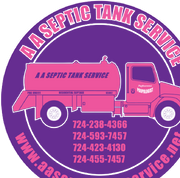A Guide to Different Types of Septic Systems

There are many septic systems that differ in their components and operations. Understanding them will give you an idea of which one is best for your property and what issues they might encounter. Learn more about the differences between different systems below and why their differences matter.
The Different Types of Septic Systems
There are several different septic systems that filter and treat your wastewater safely. The most common ones are as follows:
-
Conventional: Conventional components include a septic tank and a drain field of gravel. They’re the most common system and are ideal for homes and small businesses.
-
Chamber: A chamber system has a tank but doesn’t use gravel in its drain field. It uses materials such as fabric-wrapped piping or recycled products to create chambers instead, where soil treats the wastewater. It’s more environmentally friendly than conventional systems.
-
Drip Distribution: This system requires electricity and a large pump tank to deliver scheduled amounts of wastewater to the drain field. Instead of chambers, it uses multiple sections of thin tubing with numerous water outlets for the drain field, which are set shallowly in the soil.
-
Mound: A mound system has its drain field embedded in a large mound of soil, with layers of gravel and sand to serve as filters before the wastewater reaches the soil. They do require a fair amount of septic maintenance to maintain efficiency.
-
Aerobic Treatment: An aerobic treatment unit replaces a septic tank. It uses an air pump to inject oxygen into the effluent to increase natural bacteria before it’s pushed out to the drain field. It requires lifetime maintenance and may include other stages of treatment to minimize the waste introduced to the soil.
-
Recirculating Sand Filter: Sand systems can be made above or below ground. Wastewater is pushed from the septic tank into the pump and then into the top of the filter, which is a concrete box filled with sand and stone. It offers high filtration, but the cost can be high.
Why the Differences Matter
 Knowing the systems will help you identify which is best suited for your needs. Conventional ones are best for small properties with low waste demands.
Knowing the systems will help you identify which is best suited for your needs. Conventional ones are best for small properties with low waste demands.
Chamber systems do well with high water tables, for seasonal properties, or where chamber materials are more available than gravel. Drip distribution doesn’t require much soil, while aerobic and sand filtration systems are ideal where there is a high water table or for areas close to bodies of water that are at risk for contamination with standard systems. Mound systems work for areas with shallow soil and bedrock.
No matter what type of septic system you choose, you need seasoned septic service professionals to maintain it. At A A Septic Tank & Drain Service in Acme, PA, their highly-trained team will provide reliable septic services at competitive rates, with over 35 years of experience behind them. From septic maintenance to repairs, they’ll assist you with your system no matter what type you pick. Learn more about their services online and call (724) 593-7457 to schedule a consultation.
About the Business
Have a question? Ask the experts!
Send your question

